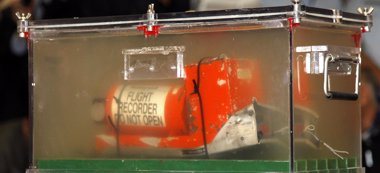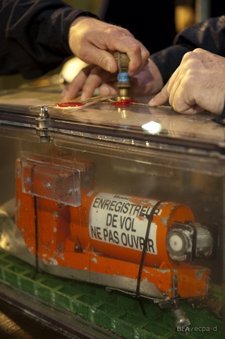MADRID, 27 May. Air France pilots who fell into the Atlantic in June 2009, tried for four minutes that the device does not crash into the sea, an event that ultimately was causing the crash of the apparatus with the nose up, the statement issued today by the Office of Research and Analysis (BEA, its acronym in French) after the first analysis of the black boxes of crashed appliance.
When advised of the loss of control of the aircraft, the captain was resting, so it was out of service, with the two co-pilots who took over control of the same functions. However, the BEA makes clear that the captain returned to the cabin "about a minute and a half" after the occurrence of the disconnection of the autopilot.
After turning off the automatic driving, the A330 went up to 38,000 feet high, after which a decline began three and a half minutes that caused a shaking of the aircraft from left to right. "The pilot's orders were based mainly on the nose of the aircraft," the BEA report, adding that "the engines have always responded to the orders of the crew." The office has ensured that the researchers have to analyze and validate all data from a process "long and hard", so that, as announced, will not issue a new interim report before the summer.
This is the third report of the BEA, after more than two years of searching for wreckage in an area of 10,000 km to about 4,000 meters under the sea, and the analysis of more than 1,000 fragments of the plane. The previous interim reports by the BEA suggesting that the aircraft crossed a storm front minutes before the accident and reading the speedometer was not adequate, and recommended the replacement of speed sensors known as' pitot 'Thales brand, being unsure of their reliability at high altitude.
In addition, the warning system did not work. 


When advised of the loss of control of the aircraft, the captain was resting, so it was out of service, with the two co-pilots who took over control of the same functions. However, the BEA makes clear that the captain returned to the cabin "about a minute and a half" after the occurrence of the disconnection of the autopilot.
After turning off the automatic driving, the A330 went up to 38,000 feet high, after which a decline began three and a half minutes that caused a shaking of the aircraft from left to right. "The pilot's orders were based mainly on the nose of the aircraft," the BEA report, adding that "the engines have always responded to the orders of the crew." The office has ensured that the researchers have to analyze and validate all data from a process "long and hard", so that, as announced, will not issue a new interim report before the summer.
This is the third report of the BEA, after more than two years of searching for wreckage in an area of 10,000 km to about 4,000 meters under the sea, and the analysis of more than 1,000 fragments of the plane. The previous interim reports by the BEA suggesting that the aircraft crossed a storm front minutes before the accident and reading the speedometer was not adequate, and recommended the replacement of speed sensors known as' pitot 'Thales brand, being unsure of their reliability at high altitude.
In addition, the warning system did not work.



- Air France Plane Stalled, Entered 3.5-Minute Plunge (27/05/2011)
- Pilots battled with controls of Air France crash plane for four minutes (27/05/2011)
- Air France Captain Absent Before Crash (27/05/2011)
- Air France captain was absent when descent began (27/05/2011)
- Air France pilot absent at start of descent (27/05/2011)
No comments:
Post a Comment